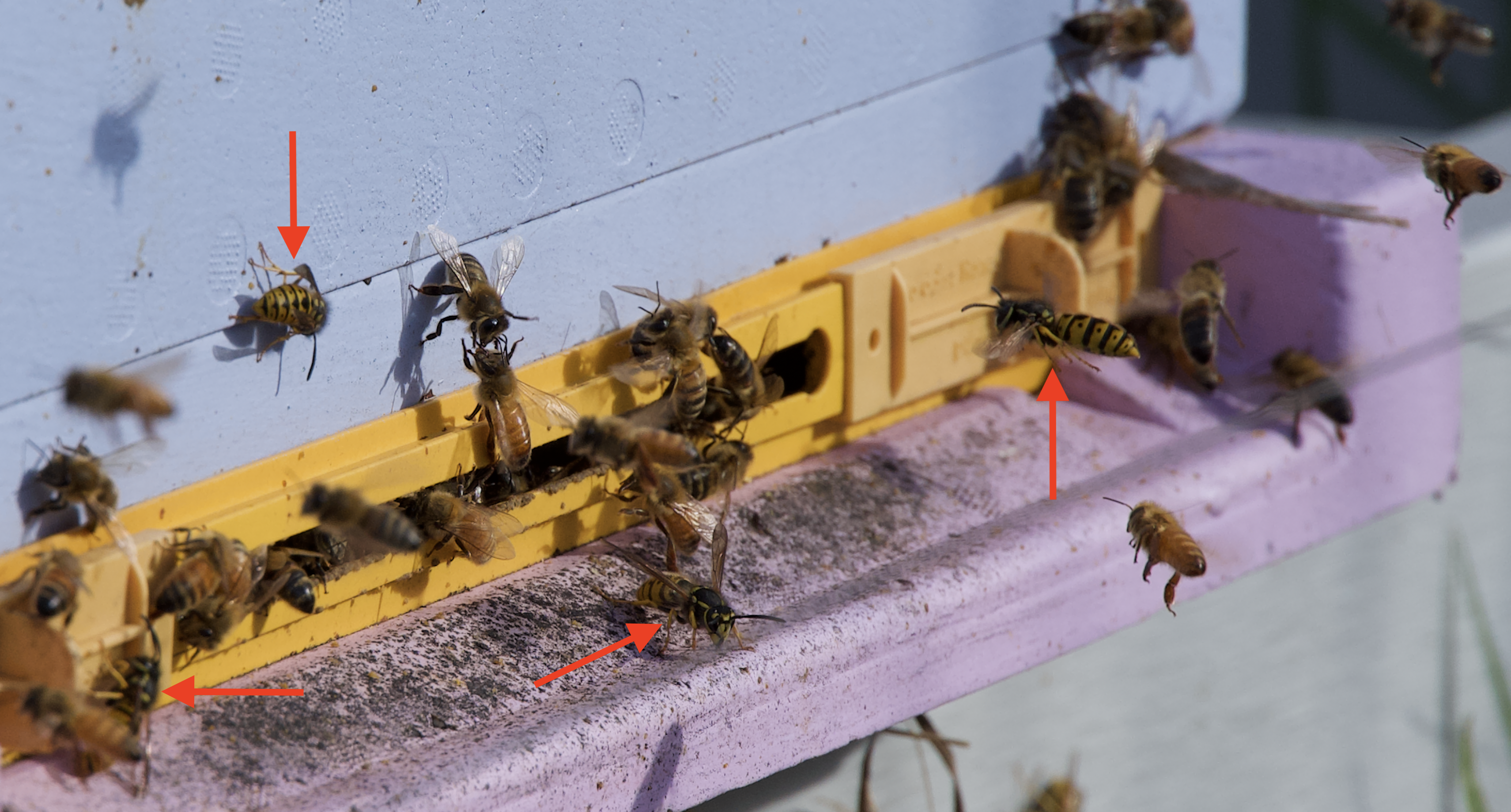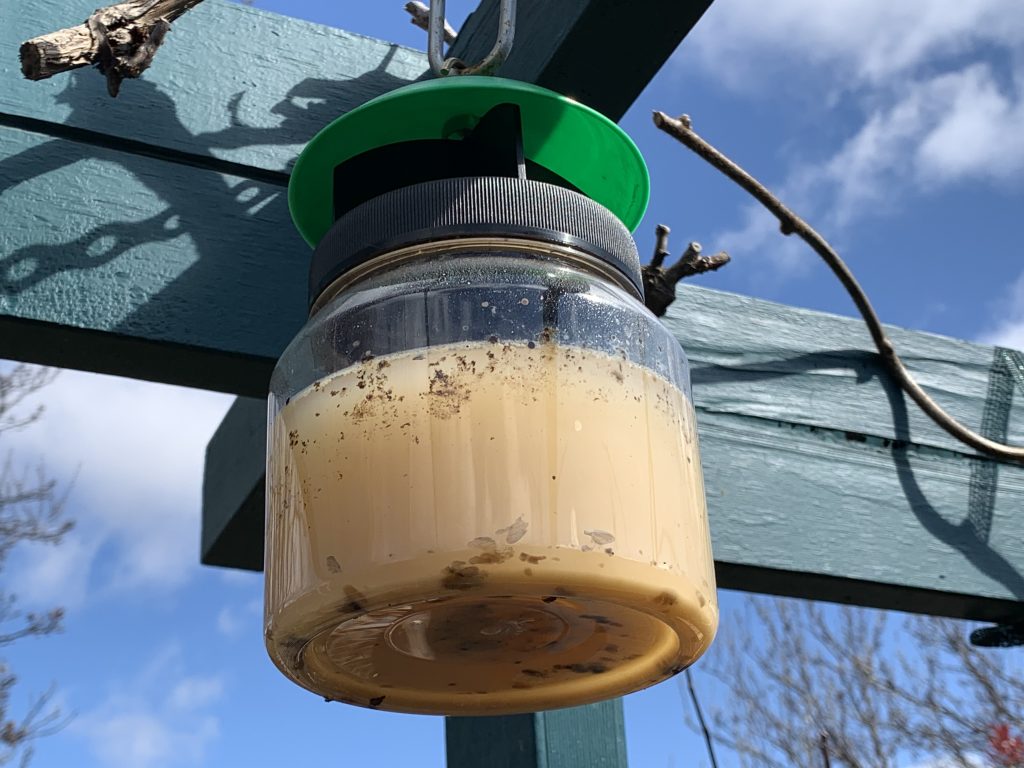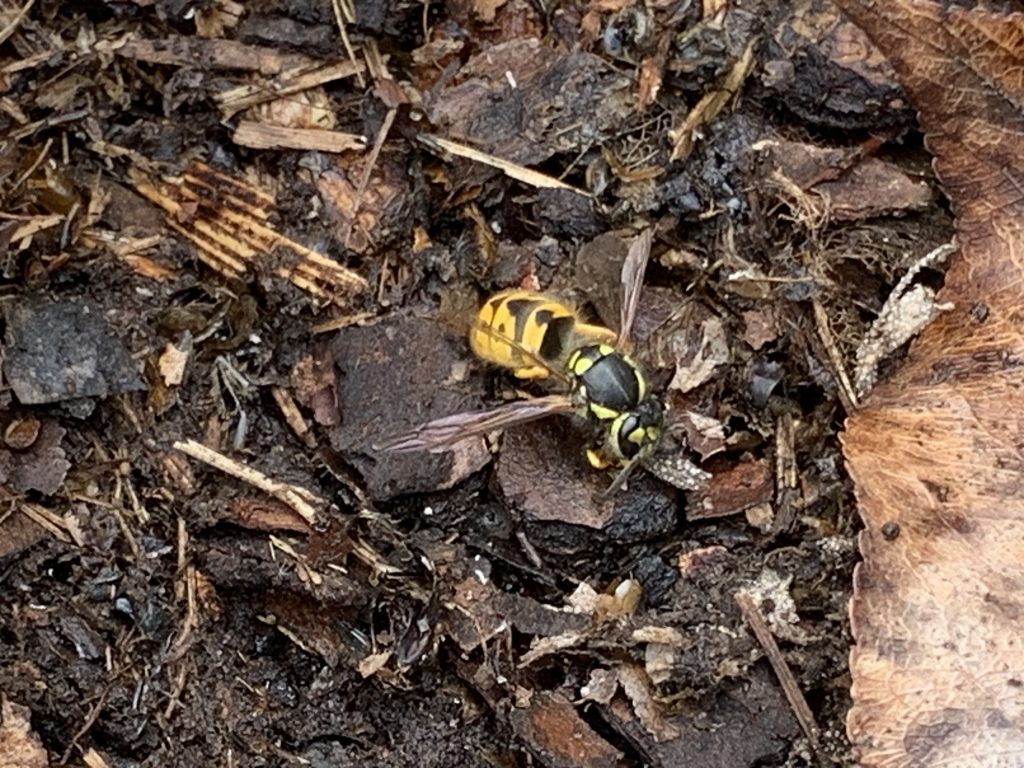
Warm Winter = Wiley Wasps
The weather of late in our region has certainly presented us with changes that we would not usually see this time of year. Particularly wasps in winter!
We found the concentration of wasps heading into winter was higher than usual and as such, we placed wasp traps around our apiaries to mitigate any damage to hives. Over this season’s warmer winter, we still found quite a few wasps flying around. This is unusual as the workers will die off over the cooler months – not because of the cold – they starve due to the lack of food. The queens hibernate through the dearth and re-emerge in Spring when food is again available. This means that for this warm 2023 winter season at least, there has been ample food available to keep the wasp numbers ticking over.
Doing our rounds from time to time at our apiaries, we found that our wasp traps were absolutely jam-packed with wasps – particularly in late Autumn. Our seasonal practice is to take down the traps when the weather cools and not think about wasps until early Summer. However, a recent check at one apiary found the wasps still managed to kill a weaker hive over winter.
As the arrows in the picture for the post illustrate, several wasps (workers) were probing one of our colonies about a week ago.
Worker wasps in late Winter? We can say we have not seen that around Southern NSW.
The European Wasp, Vespula germanica, (Family Vespidae), seen in the main picture of this post was introduced into Tasmania in 1959. They have spread across Australia and as far as Western Australia. It is an able hunter as well as an opportunistic feeder that will take anything from other insects (dead or alive) to items in the household garbage. Our winters need to be fairly cold and miserable nowadays to affect these wasps, yet if you live in Queensland and northern NSW you will see the wasps around. Down south around the high country in NSW and Victoria, we would have a reprieve from the European wasp – yet not lately.
What is our advice? Head out with your wasp traps early folks.
We have workers wasps flying around our hives now which indicates the wasp Queens are active and there is nothing like a nice, juicy nucleus colony to kick off the Spring. Wasps don’t need to invade a colony – they pick off the bees out the front. As far as the wasps are concerned, a meal is a meal and it doesn’t matter how they come by the meal.


At Odd Acres Apiary, we avoid using chemicals in and near our hives. We use standard wasp traps that have proved effective as seen in our first photograph above – the collection in the jar was after one day. Our second photograph illustrates a wiley wasp hanging around one of our hives. This wasp was not alone, with three buddies loitering for fresh bees and we are still in winter!
With this higher-than-usual European wasp activity, we posted on Instagram to let beekeepers know they must stay vigilant in their hive monitoring regarding wasps as the warmer Spring season commences. The warmer weather will certainly be a challenge for bee hives, if the hives come out of winter, weaker than planned.
![]()

